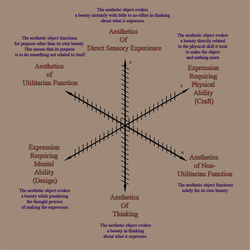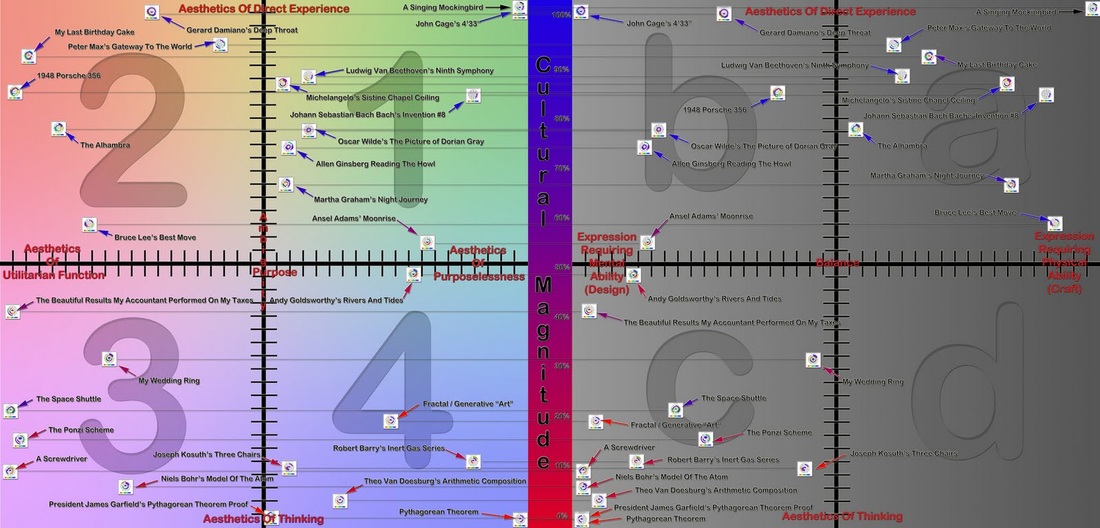Mission

To explore the concept that art and science do not live in a particular aesthetic category in and of themselves but that art and science are composed of many aesthetic categories.
To see a video explanation of by Kaz Maslanka of PAMM go to this link
PolyAesthetic Mapping attempts to change the traditional views of what aesthetics are by attempting to visualize these concepts in space and use a public survey to populate that map.
By challenging the definitions of aesthetics and how we normally look at it, this mapping will help assist artists and scientists as well as non-artists and scientists to understand the nature of their personal aesthetic and how it relates to science, art and other aesthetic expressions.
Further aids to visualize these differences will be in the descriptive form of nine muses, each with different characteristics of six designated attributes of aesthetics defined in the polyaesthetic mapping system. These muses will be realized in the form of microtonal music, sculptures and fashion.
To see a video explanation of by Kaz Maslanka of PAMM go to this link
PolyAesthetic Mapping attempts to change the traditional views of what aesthetics are by attempting to visualize these concepts in space and use a public survey to populate that map.
By challenging the definitions of aesthetics and how we normally look at it, this mapping will help assist artists and scientists as well as non-artists and scientists to understand the nature of their personal aesthetic and how it relates to science, art and other aesthetic expressions.
Further aids to visualize these differences will be in the descriptive form of nine muses, each with different characteristics of six designated attributes of aesthetics defined in the polyaesthetic mapping system. These muses will be realized in the form of microtonal music, sculptures and fashion.

